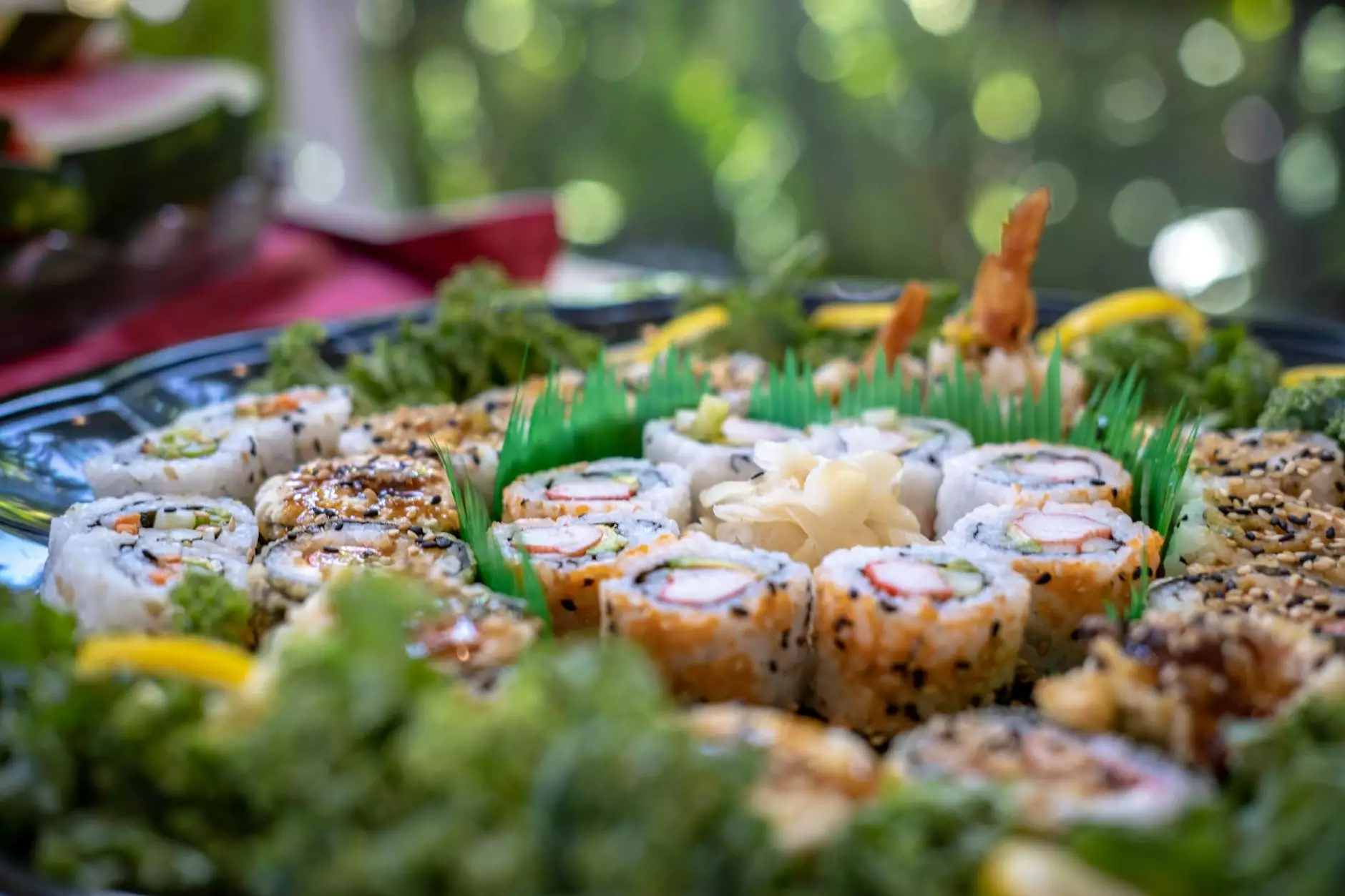The Unique Culinary Advantage of Fresh Wasabi Leaves

When you think of Japanese cuisine, the iconic image of wasabi often comes to mind. Traditionally, this vibrant green condiment is made from the rhizome of the wasabi plant. However, the use of fresh wasabi leaves is a lesser-known aspect of this remarkable plant that deserves greater attention. In this article, we will explore the various ways in which fresh wasabi leaves can elevate culinary experiences, particularly in restaurants, sushi bars, and other settings focused on Japanese cuisine.
What Are Fresh Wasabi Leaves?
Fresh wasabi leaves come from the same plant that produces the well-known wasabi paste. The wasabi plant (Wasabia japonica) thrives in cold, clear streams and is native to Japan. While most diners are familiar with the pungent flavor of its rhizome, the leaves offer a unique, milder flavor profile and myriad culinary applications.
The Flavor Profile of Wasabi Leaves
Fresh wasabi leaves have a peppery flavor similar to but less intense than that of wasabi root. They can be described as zesty, with a hint of bitterness and an herbaceous quality that makes them an attractive option for a variety of dishes. The texture is tender yet slightly crunchy, adding a delightful contrast when included in recipes.
What Makes Wasabi Leaves Unique?
Wasabi leaves possess several unique characteristics:
- Flavor Versatility: Their flavor makes them adaptable for use in salads, garnishes, or as a cooking ingredient.
- Nutritional Benefits: Rich in vitamins A and C, they contribute to a healthy diet.
- Aromatic Qualities: When fresh, the leaves emit a pleasant aroma that can enhance the overall dining experience.
Uses of Fresh Wasabi Leaves in Culinary Practices
With their unique flavor and nutritional benefits, fresh wasabi leaves can be incorporated into various culinary applications. Below are some common uses:
1. In Salads and Garnishes
The mild, peppery flavor of fresh wasabi leaves makes them an excellent addition to salads. They can be used as a salad green or as a garnish, providing a splash of color and an unexpected taste that elevates the dish. The leaves can be added to green salads, grain salads, or even sushi rolls for an additional layer of flavor.
2. In Sushi
While traditional sushi typically uses wasabi root, incorporating fresh wasabi leaves can give sushi a new twist. Use the leaves as a wrap for sashimi or roll them within maki for a fresh burst of flavor. Their vibrant green color adds visual appeal to the plate, enticing diners before they even take a bite.
3. As a Flavoring Agent
Fresh wasabi leaves can infuse their distinct flavor into a variety of dishes. They can be blended into dressings, sauces, or marinades, providing a unique kick that pairs well with seafood, grilled meats, or even vegetables. Experimenting with the leaves in different culinary contexts can lead to exciting discoveries, making them a valuable asset in the kitchen.
4. In Soups and Broths
Adding chopped fresh wasabi leaves to miso soup or broth can introduce a wonderful aromatic element while enhancing the flavor profile. Cooking the leaves briefly will mellow their peppery notes, making them a delightful addition to warm dishes without overpowering the other ingredients.
Health Benefits of Fresh Wasabi Leaves
Beyond their culinary applications, fresh wasabi leaves also offer several health benefits:
- Antioxidant Properties: Wasabi leaves contain antioxidants that help combat oxidative stress and promote overall health.
- Vitamin-Rich: They are an excellent source of vitamins A and C, essential for maintaining healthy vision, skin, and immune function.
- Anti-Inflammatory Benefits: Some compounds found in wasabi leaves may help reduce inflammation in the body.
How to Source Fresh Wasabi Leaves
To experience the full flavors and benefits of wasabi leaves, it's important to source them properly. These leaves are best enjoyed fresh, so look for suppliers or local markets that specialize in Japanese produce. In addition, their use is increasingly spreading to specialty grocery stores and Japanese restaurants, where they can sometimes be found as part of seasonal offerings.
Understanding Quality
When selecting fresh wasabi leaves, ensure that they are vibrant in color, firm, and fragrant. Avoid any leaves that appear wilted, discolored, or have brown spots, as this may indicate that they are past their prime.
Integrating Fresh Wasabi Leaves into Your Menu
For restaurant owners and chefs, integrating fresh wasabi leaves into your menu can be a fantastic way to differentiate your offerings. Here are a few tips on how to seamlessly incorporate these unique leaves into your dishes:
1. Embrace Challenges in Creativity
Experiment with wasabi leaves in innovative ways and let your creativity run wild. Whether you're developing a new dish or revising an existing menu, consider how the leaves can complement the flavors and textures of your offerings.
2. Educate Your Staff
When introducing fresh wasabi leaves, it's essential to educate your kitchen and serving staff about their unique attributes, flavor profile, and potential uses. This knowledge will empower your team to make recommendations and engage with customers about the benefits of these leaves.
3. Create a Seasonal Special
Highlighting a dish that showcases fresh wasabi leaves can attract attention and spark diners' interest. Creating a seasonal special utilizing these leaves can keep your menu fresh and exciting while drawing in customers eager to try something new.
The Future of Fresh Wasabi Leaves in Restaurant Culture
As more people become aware of the culinary possibilities offered by fresh wasabi leaves, it’s likely that their popularity will only increase. Restaurants and sushi bars are always on the lookout for innovative ingredients that can set them apart. By incorporating wasabi leaves into recipes, businesses can not only provide a unique dining experience but also educate guests on the versatility of this traditional Japanese ingredient.
Customer Preferences and Market Trends
Recent trends in the culinary world show a growing demand for fresh, locally sourced ingredients. As sustainability and farm-to-table approaches gain traction, fresh wasabi leaves align perfectly with these trends. By sourcing them from local growers, restaurants can offer outstanding dishes while supporting their community.
Conclusion
In conclusion, fresh wasabi leaves provide an exciting addition to the culinary landscape, particularly in restaurants and sushi bars focusing on Japanese cuisine. Their unique flavor profile, nutritional benefits, and versatility make them a prime candidate for innovative cooking. Whether you're a home chef seeking inspiration or a restaurant owner looking to enhance your menu, fresh wasabi leaves are undoubtedly worth exploring. Embrace this distinctive ingredient today and discover the difference it can make in your culinary creations!









